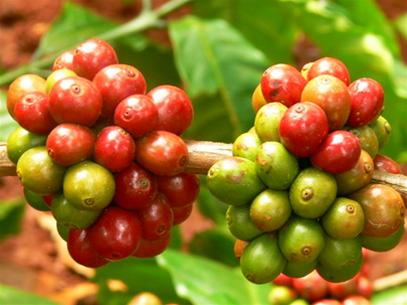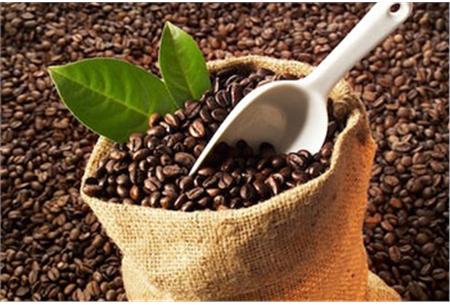Coffee & Life
Domestic coffee market: endless chase
.According to Euromonitor’s assessment at the end of last year, the sales of instant coffee in Vietnam were about VND6,000 billion and increased steadily by at least 20% in the next three to four years. Domestic coffee traders believe that if only 20% of the Vietnamese population drank an additional cup of coffee (25g of ground coffee/cup) a day, an additional 128,000 tons of ground coffee would be consumed each year, equivalent to 196,000 tons of green coffee, accounting for 14% of current coffee export output. Seeing the potential in the future, recently, many big brands in the world have jumped in to invest.
 Instant coffee: the playground of the big guys
Instant coffee: the playground of the big guys
The added value of instant coffee compared to green coffee is very attractive. In 2012, the whole country exported 1.4 million tons of green coffee with a value of 2 billion USD (1,428 USD/ton of green coffee). Meanwhile, Vinacafé Bien Hoa’s output was about 17,000 tons but its revenue was about 65 million USD. With some calculations, each ton of green coffee used in instant coffee packages costs about 3,000 USD, double the raw export value. According to Euromonitor’s assessment at the end of last year, the sales of the instant coffee group in Vietnam were about 6,000 billion VND and increased steadily by at least 20% in the next three to four years. Although the sales of the instant coffee group have not satisfied the manufacturers, for the sake of profit, domestic and foreign instant coffee manufacturers have used many tricks to convince consumers, including the people of the Central Highlands. In any supermarket, store, or even a grocery store in a small alley, you can see instant coffee brands from different companies standing side by side.
The battle for instant coffee market share has been fierce for nearly a decade with familiar names such as Vinacafe Bien Hoa, Nestlé, and Trung Nguyen. It is estimated that these three giants account for about 90% of the instant coffee market share in Vietnam, divided equally with a difference of 1-2% depending on the time.
A marketing expert believes that the market would have been calm for the two giants that came before, Vinacafé Biên Hòa and Nestlé, if it had not been for the event of Trung Nguyen receiving the transfer of the Saigon coffee factory from Vinamilk (September 2010), especially the appearance of the “giant” Masan buying back 16.37% of Vinacafé Biên Hòa’s shares in November 2011, to become the controlling shareholder of the brand that once held 80% of the instant coffee market share. The battle for position in the instant coffee segment is increasingly fierce. Major manufacturers have launched many types of instant coffee to meet the “taste” of users who are used to the traditional brewing method. Grasping the psychology of instant coffee users who are used to 3-in-1 coffee (coffee – sugar – milk), Nestlé and Trung Nguyen have launched 2-in-1 coffee (coffee and sugar). Vinacafé Bien Hoa, which initiated the campaign against dirty coffee last year, introduced to consumers packages of “coffee made from coffee”.
.

It is impossible not to mention CEO Dang Le Nguyen Vu when choosing the marketing style of “swinging” into bigger brands to make an impression for the G7 product. When Nestle switched to producing 2-in-1 instant coffee with the flavor of “100% Vietnamese coffee” with the commitment: “more delicious, stronger coffee flavor”, Trung Nguyen immediately “counterattacked” with the message: “extremely strong coffee flavor”. When Nestle revised its slogan: “Are you strong enough to try?”, Trung Nguyen added to its slogan: “Not strong enough, it must be the right taste”…
Although not yet famous, the Vietnamese instant coffee market has also recorded newer names such as Highlands, Thu Ha, Me Trang…
Powdered coffee, a chaotic game
There are no statistics on the amount of ground coffee (roasted coffee) consumed domestically, but it is not too difficult to identify brands with “market share” such as Trung Nguyen (Dak Lak), Highlands (HCMC), Thu Ha (Gia Lai), Mehico (Dak Lak), Da Vang (Kontum), Huy Tung (Phu Yen), Me Trang (Khanh Hoa)…
In a survey earlier this year, market research company Mintel said that Vietnam is the world’s leading country in ground coffee consumption. This is also the condition for private establishments and small and medium enterprises to jump in and exploit with the main trick of raising prices, leading to poor quality and unsafety for users. Everyone sees that this segment is chaotic but there is no effective way to control it.
From a famous coffee shop in Pleiku, in 1988, Thu Ha started producing packaged ground coffee. Mr. Ngo Nguyen Tuan Anh, director of Thu Ha Company, Ho Chi Minh City branch, said that Thu Ha’s ground coffee has an output of about 100 tons/year, of which 30% is exported, the rest is consumed domestically in the form of retail, wholesale and even opening shops.
Mexico is also a familiar brand of ground coffee to domestic consumers when the product is available in many localities, but the company representative refused to disclose the amount of products produced and consumed. Considered a leading giant in the ground coffee group, Trung Nguyen also refused to disclose the amount of ground coffee consumed domestically.
The presence of domestic and foreign brands related to coffee such as Trung Nguyen, Highlands, The Coffee Bean & Tea Leaf, Gloria Jean’s Coffees, Passio, coffee shops following the “coffee to go” model and the most noisy one is Starbucks in the Vietnamese market, according to many experts, is only valuable in exploiting the beverage business brand rather than increasing the domestic consumption rate of Vietnamese coffee beans. And no matter how famous they are, it is difficult to overwhelm the dynamic small businesses, garden coffee, sidewalk coffee, the next wave playing with the previous wave, which meet the needs and tastes of the people very diversely…
Specifically, buying or drinking coffee by roasting and grinding at shops is not new, but to become a popular model only appeared recently, in 2013 when the media warned about dirty coffee.
Mr. Trinh Ngoc Son, owner of Son Coffee Shop (Truong Son, Tan Binh, Ho Chi Minh City) said: “The form of self-selection of coffee is just a marketing move, persuading users to return to coffee to gradually attract customers to drink coffee in the traditional way instead of instant coffee”.
Collected







